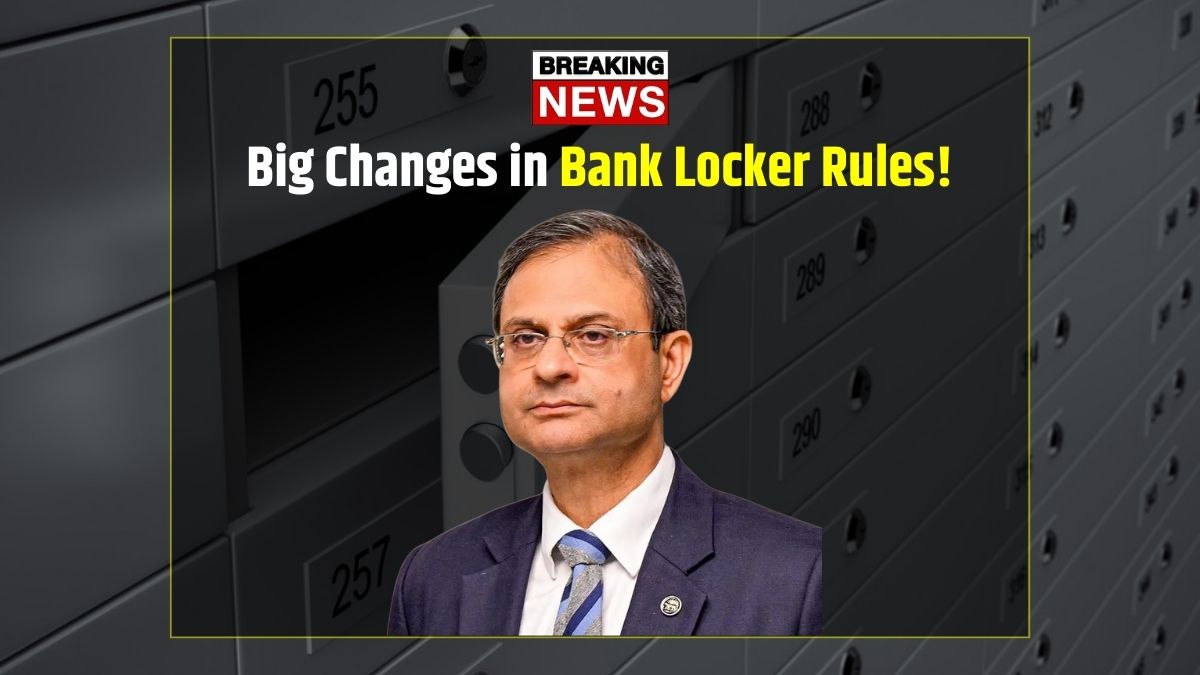Bank Locker Rules – If you’re someone who rents a bank locker to store your valuables, there’s big news you shouldn’t ignore. Starting June 1, 2025, new rules from the Reserve Bank of India (RBI) will come into effect, changing the way bank lockers are managed, accessed, and charged. These updates will directly affect millions of people across the country who depend on bank lockers for safe-keeping of their jewellery, documents, and cash.
Signing a New Agreement Is Now a Must
One of the biggest changes is that all existing and new bank locker holders will need to sign a fresh agreement with their bank. This agreement will clearly lay out what the customer is storing, how the locker is to be used, and what responsibilities lie with the bank and the customer.
Earlier, many people did not have a formal contract with the bank or were unaware of the terms. Now, the RBI wants everything to be clear and on paper to reduce any confusion or legal disputes in the future. So if you haven’t updated your locker agreement yet, you’ll have to visit your bank soon to complete this formality.
Changes in Locker Fees Based on Size and Location
The RBI has also revised the locker charges, and these new rates will depend on the size of the locker and whether you’re located in a metro city or not.
- Small lockers (around 6×6 inches) will now cost between Rs 1,500 to Rs 3,000 per year.
- Medium lockers (around 10×10 inches) will cost Rs 4,000 to Rs 6,000 per year.
- Large lockers (bigger than 12×12 inches) will attract charges between Rs 8,000 to Rs 12,000 annually.
If your bank branch is in a metro city like Mumbai, Delhi, or Bangalore, you can expect to pay around 20 percent more than these average rates. These new fees will help banks cover costs of enhanced security and maintenance.
Stronger Security Systems Are Now Mandatory
Another major update is around safety. The RBI is making it compulsory for banks to implement double-layered security systems for locker access. This means banks must use biometric systems (like fingerprint or iris scan) along with another form of authentication such as a PIN or access card.
Additionally, every locker room will now be under continuous CCTV surveillance. Footage will be stored for a certain period, which will help banks track any suspicious activity or investigate in case something goes wrong.
This is a welcome change, especially given the increasing number of complaints in recent years about stolen items or break-ins.
New Locker Operation Procedure
You can no longer operate the locker independently using just your key. From June 1 onwards, locker access will require two keys — one with you and the other with the bank. Both keys must be used together to open the locker.
Also, if you haven’t operated your locker for three years in a row, the bank has the right to open it for inspection. This move is aimed at reducing the number of unused or abandoned lockers, which sometimes pose legal and security issues.
What Happens If the Locker Gets Damaged?
The new rules also talk about what happens in case of damage. If your locker gets damaged due to technical faults, natural disasters, or any other reason, the bank will be required to provide insurance coverage for the locker itself.
However, it’s important to note that this doesn’t mean the contents of your locker are insured. It’s still your responsibility to insure the cash, jewellery, or documents kept inside. So, if you’re storing anything valuable, it’s a smart move to get your own insurance policy that covers it.
These new rules have been introduced by the RBI to ensure better transparency, safety, and accountability when it comes to using bank lockers. While some changes like fee hikes may pinch a little, the overall goal is to make the system safer and more reliable for everyone.
If you already have a locker or plan to get one soon, it’s a good idea to visit your bank, go over the new agreement, ask about the updated charges, and understand the new security steps. Also, consider getting separate insurance for your valuables.
By staying informed and updated, you can continue using your bank locker with confidence and peace of mind.





